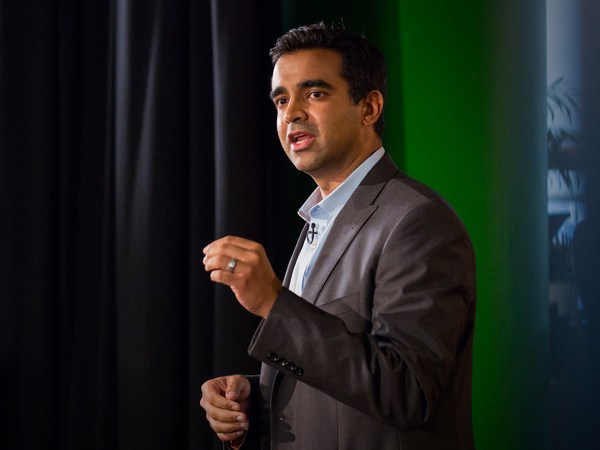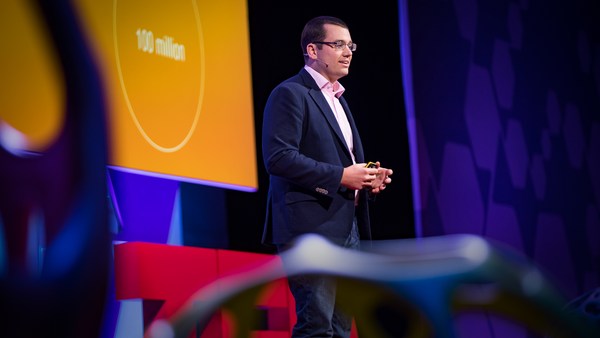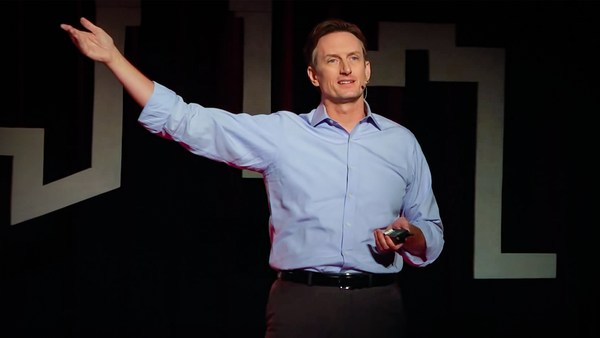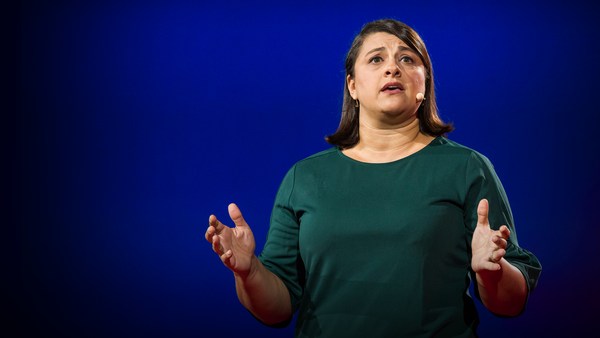It's 4am in the morning. I'm waking up in a Boston hotel room and can only think of one thing: tooth pain. One of my ceramic inlays fell off the evening before. Five hours later, I'm sitting in a dentist's chair. But instead of having a repair of my inlay so that I can get rid of my pain, the dentist pitches me on the advantages of a titanium implant surgery. Ever heard of that?
(Laughter)
It essentially means to replace a damaged tooth by an artificial one, that is screwed into your jaw. Estimated costs for the implant surgery may add up to 10,000 US dollars. Replacing the ceramic inlay I had before would come in at 100 US dollars. Was it my health or the money that could be earned with me that was the biggest concern for my dentist?
As it turned out, my experience wasn't an isolated case. A study by a US national newspaper estimated that in the United States, up to 30 percent of all surgical procedures -- including stent and pacemaker implantations, hip replacements and uterus removals -- were conducted although other nonsurgical treatment options had not been fully exploited by the physician in charge. Isn't that figure shocking? Numbers may be slightly different in other countries, but what it means is that if you go to a doctor in the US, you have a not-insignificant chance to be subjected to a surgical intervention without there being an immediate need for it. Why is this? Why are some practitioners incentivized to run such unnecessary procedures?
Well, perhaps it is because health care systems themselves incentivize in a nonideal way towards applying or not applying certain procedures or treatments. As most health care systems reimburse practitioners in a fee-for-service-based fashion on the number and kind of treatments performed, it may be this economic incentive that tempts some practitioners to rather perform high-profit surgical treatments instead of exploring other treatment options. Although certain countries started to implement performance-based reimbursement, anchored on a quality and efficacy matrix, overall, there's very little in today's health care systems' architecture to incentivize practitioners broadly to actively prevent the appearance of a disease in the first place and to limit the procedures applied to a patient to the most effective options.
So how do we fix this? What it may take is a fundamental redesign of our health care system's architecture -- a complete rethinking of the incentive structure. What we may need is a health care system that reimburses practitioners for keeping their customers healthy instead of almost only paying for services once people are already sick. What we may need is a transformation from today's system that largely cares for the sick, to a system that cares for the healthy. To change our current "sick care" approach into a true "health care" approach. It is a paradigm shift from treating people once they have become sick to preserving the health of the healthy before they get sick. This shift may move the focus of all those involved -- from doctors, to hospitals, to pharmaceutical and medical companies -- on the product that this industry ultimately sells: health.
Imagine the following. What if we redesign our health care system into one that does not reimburse practitioners for the actual procedures performed on a patient but rather reimburses doctors, hospitals, pharmaceutical and medical companies for every day a single individual is kept healthy and doesn't develop a disease? In practical terms, we could, for example, use public money to pay a health fee to an insurance company for every day a single individual is kept healthy and doesn't develop a disease or doesn't require any other form of acute medical intervention. If the individual becomes sick, the insurance company will not receive any further monetary compensation for the medical interventions required to treat the disease of that individual, but they would be obliged to pay for every evidence-based treatment option to return the customer back to health. Once the customer's healthy again, the health fee for that individual will be paid again.
In effect, all players in the system are now responsible for keeping their customers healthy, and they're incentivized to avoid any unnecessary medical interventions by simply reducing the number of people that eventually become sick. The more healthy people there are, the less the cost to treat the sick will be, and the higher the economic benefit for all parties being involved in keeping these individuals healthy is.
This change of the incentive structure shifts, now, the attention of the complete health care system away from providing isolated and singular treatment options, towards a holistic view of what is useful for an individual to stay healthy and live long.
Now, to effectively preserve health, people will need to be willing to share their health data on a constant basis, so that the health care system understands early enough if any assistance with regard to their health is needed. Physical examination, monitoring of lifetime health data as well as genetic sequencing, cardiometabolic profiling and imaging-based technologies will allow customers to make, together with health coaches and general practitioners, optimal and science-guided decisions -- for their diet, their medication and their physical activity -- to diminish their unique probability to fall sick of an identified, individual high-risk disease.
Artificial intelligence-based data analysis and the miniaturization of sensor technologies are already starting to make monitoring of the individual health status possible. Measuring cardiometabolic parameters by devices like this or the detection of circulating tumor DNA in your bloodstream early on after cancer disease onset are only two examples for such monitoring technologies.
Take cancer. One of the biggest problems in certain oncological diseases is that a large number of patients is diagnosed too late to allow them to be cured, although the drugs and treatments that could potentially have cured them are already existing today, if the disease had only been detected earlier. New technologies allow now, based on a few milliliters of blood, to detect the presence of circulating tumor DNA and thus, the presence of cancer, early on in a really convenient manner. The impact that this early-stage detection can have may be dramatic. The five-year survival rate for non-small cell lung cancer when diagnosed at stage one, which is early, is 49 percent. The same, when diagnosed at stage four, which is late, is below one percent. Being potentially able to prevent a large number of deaths by something as simple as a blood test for circulating tumor DNA could make certain cancer types a manageable disease, as disease onset can be detected earlier and positive treatment outcomes can likely be increased.
In 2012, 50 percent of all Americans had a single chronic disease, resulting in 86 percent of the $3 trillion US health care budget being spent for treating such chronic diseases. Eighty-six percent. If new technologies allow now to reduce this 86 percent, why have health care systems not reacted and changed already?
Well, a redesign of what today is a sick care system into a true health care system that focuses on prevention and behavioral changes requires every actor in the system to change. It requires the political willingness to shift budgets and policies towards prevention and health education to design a new set of financial and non-financial incentives. It requires creating a regulatory framework for the gathering, using and sharing of personal health data that's at the same time stringent and sensible. It needs doctors, hospitals, insurers, pharmaceutical and medical companies to reframe their approach and, most important, it can't happen without the willingness and motivation of individuals to change their lifestyle in a sustained way, to prioritize staying healthy, in addition to opening up for sharing the health data on a constant basis.
This change may not come overnight. But by refocusing the incentives within the health care industry today to actively keep people healthy, we may not only be able to prevent more diseases in the first place but we may also be able to detect the onset of certain preventable diseases earlier than we do today, which will lead to longer and healthier lives for more people.
Most of the technologies that we need to initiate that change are already existing today. But this is not a technology question. It is primarily a question of vision and will.
Thanks a lot.
(Applause)





